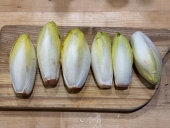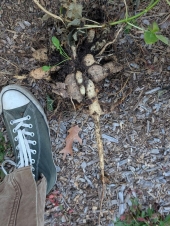Jay Angler wrote:Was there any old curry spice hiding in the same closet? I would just check before you put a lot of work into drying nettle leaves, although I have read that dried nettle leaves are good for top-dressing plants as a natural pick-me-up. I have done that in the past, and I don't recall a curry smell, but mine weren't in a paper bag.
Nope. No spices in there, and the smell is only coming from those fibres. I checked again just now, and it's specifically from one of the fibre bundles, not from the others. Odd. I wonder if I did anything different with those than with the rest? Maybe they were picked at a very specific stage, or got attacked by some specific strain of bacteria or fungi before they were fully dry, or something... No clue.
Well, I might try to replicate this with nettle leaves anyhow. If they don't turn curry-ish, I like using dried nettles in bread and soups and things anyways. Nothing's lost.






